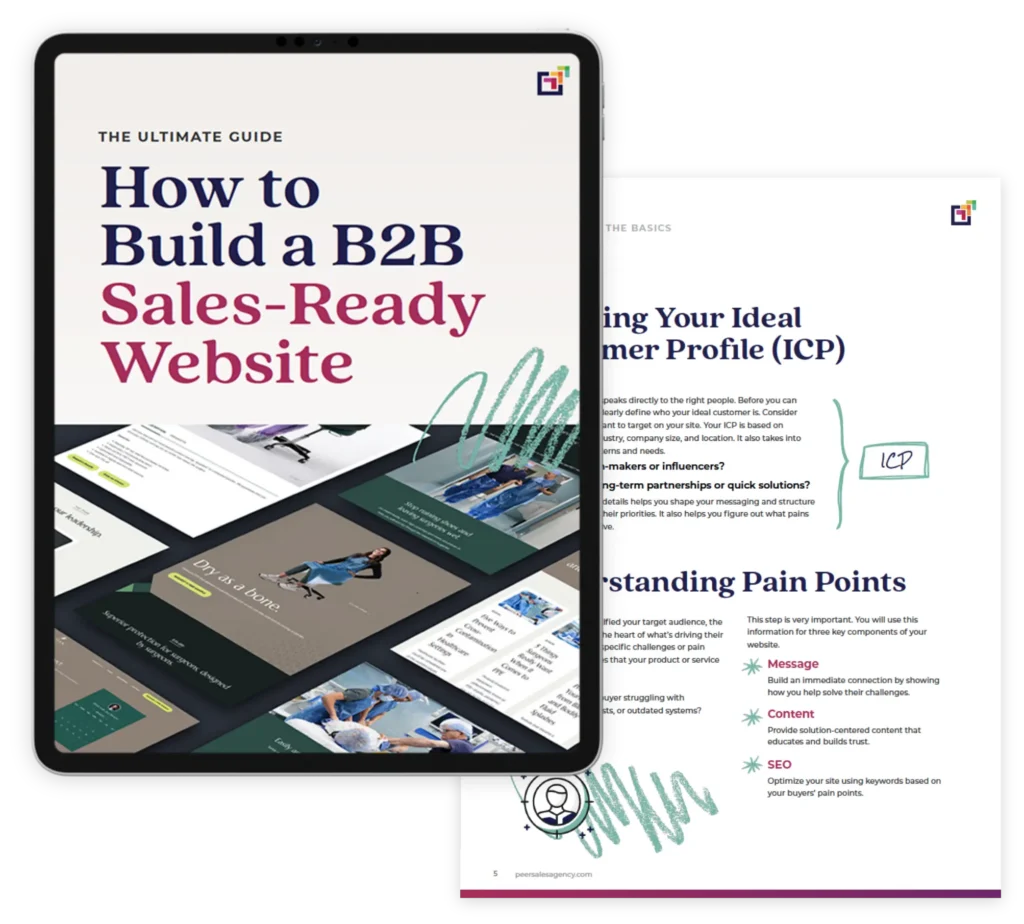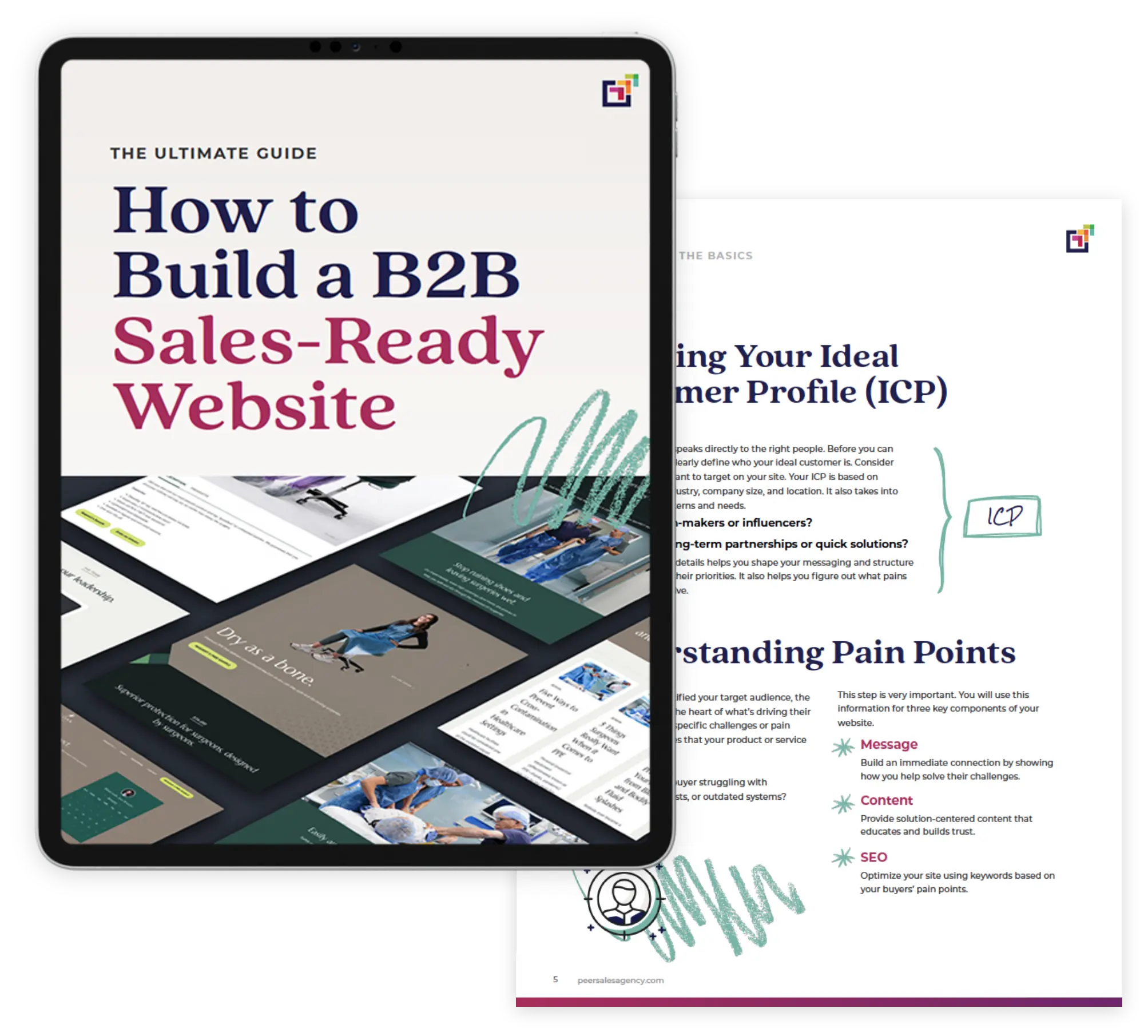B2B sales can be tough. Competition has always been fierce, but now, with the average B2B business competing with a dozen or more solutions, your buyers have more options than ever.
Sales cycles are getting longer, too. Compared to 2020, they’re running 21% longer, and win rates are down 2%.
So, what’s a sales team to do?
Get with your marketing team and hatch an integrated marketing campaign! These campaigns can significantly speed up your sales cycle and boost your revenue by strategically marketing on multiple channels to deliver a unified message, driving interest, awareness, and demand.
What is an Integrated Marketing Campaign?
An integrated marketing campaign uses multiple marketing channels to deliver a consistent and compelling message, all centered around a single campaign goal or business objective. This approach ensures that a consistent message reaches your potential customers across different platforms, such as social media, email, and advertising.
When done right, integrated campaigns can convert leads into customers and foster customer loyalty, too. Businesses enjoy a more engaged and educated prospect base, leading to quicker sales. In essence, your integrated marketing campaign should:
- Use multiple platforms like social media, email, digital advertising, trade show or conference marketing, speaking engagements, thought leadership content on your website, and traditional advertising.
- Ensure all messages align and support each other: think about your buyer’s journey and make sure you have the right mix of channels, tactics, and content to help them along the way.
- Leverage marketing automation to streamline your processes & reporting.
- Engage your audience with personalized content that’s relevant to their pain points.
Integrated marketing campaigns don’t just boost sales; they build customer loyalty and satisfaction, ensuring long-term success.
Benefits of Integrated Marketing Campaigns for B2B Businesses:
- Increased Reach: Connect with a broader audience using various channels.
- Consistent Branding: Keep your message uniform in all interactions.
- Efficiency: Reduce customer acquisition costs by targeting the right audience with the right message at the right time.
- Stronger Relationships: Build a loyal customer base by meeting their needs across different platforms.
Planning Your Integrated Marketing Campaign
Planning an integrated marketing campaign should always start with collaboration between your sales and marketing teams. Their alignment ensures that campaign goals support sales targets. Your marketing team needs to be aware of the objections, barriers, and pain points your sales team hears from prospects in order to craft a campaign that answers questions and assuages fears.
On the other side, your sales team needs to understand the campaign’s promises and their role in the process. When should they enter the picture, and what sales enablement tools should they use to do so? How will the sales team know when a lead is ready for a conversation? Your sales team will also need to understand the messaging and target audience for the campaign in order to keep their sales conversations productive.
When both teams work together to map out the campaign goal, strategy, and launch, the resulting campaign will boost sales.
Questions to Cover in Your Campaign Alignment Kickoff:
- Who are our target potential customers?
- What are the key pain points of these customers?
- Which marketing messages have worked in the past?
- Which messages or tactics haven’t worked?
- What does a warm lead look like to you?
- What objections does the sales team hear from these prospects?
- What is our ultimate goal for this campaign?
Once both teams are aligned on the campaign’s goals, tactics, and responsibilities, you can start creating the necessary assets, emails, social posts, and ads.
Dive Deeper: 5 Best Practices for Integrated B2B Marketing Campaigns That Get Results
How Does An Integrated Marketing Campaign Speed Up The Sales Cycle?
Once you’ve developed a great campaign strategy that all parties believe in, your integrated marketing campaign is set up for success. But how do you know it’s working after you launch?
Your integrated marketing campaign should affect these five key areas in order to speed up your sales cycle:
Consistent Targeting & Messaging
Integrated marketing campaigns ensure that potential customers receive a consistent message. Targeting a specific buyer persona helps maintain a focused approach, which makes the sales cycle more efficient.
Customers recognize the brand easily, and they understand the value offered. This familiarity reduces hesitation and encourages quicker purchase decisions.
Brand Awareness & Demand Generation
These campaigns play a key role in increasing brand awareness. How can prospects buy from you if they don’t know you? When more people know about a product or service, demand naturally rises. As demand grows, more potential customers enter the sales funnel.
Brand awareness and demand generation are usually long-term marketing plays; however, as part of an integrated marketing campaign, surrounding each buyer with compelling messaging and motivational offers to move down the funnel, you can make the business case for a purchase much more quickly than with brand awareness tactics alone.
This increased interest shortens the time it takes for prospects to become buyers. In B2B environments, heightened brand presence often translates into faster sales cycles.
Lead Generation
Integrated marketing campaigns are good vehicles for generating marketing-qualified leads. By attracting the right audience, businesses fill their pipeline with prospects that fit their persona and work for a business that matches their ideal customer profile.
A steady stream of well-qualified leads enables the marketing team to launch lead nurturing programs, with everything from webinars to blogs, to help warm these prospects up for a conversation with the sales team. When these marketing-qualified leads are warmed up, or they reach out to sales on their own, they graduate to sales-qualified leads.
Then, your sales team can focus on converting SQLs to Opportunities and turning those Opportunities into deals – rather than searching for new prospects or warming up ice-cold leads. This strategy speeds up the sales cycle, as warm, qualified leads are generally more prepared to make purchasing decisions.
Education & Nurturing
Speaking of nurturing your leads, these integrated marketing campaigns do a lot of the heavy lifting for you! A key marketing responsibility in these campaigns is creating and delivering content that educates your prospects about your products and services through slicks, eBooks, blogs, social media, and other pieces of marketing collateral or sales enablement.
82% of sales professionals see building strong relationships as the most crucial and rewarding aspect of the sales process (HubSpot), and the lead nurturing component of an integrated marketing campaign helps them build these relationships without so much manual effort.
People want to make their own minds up, and no matter how hard anyone tries, we cannot force a prospect to be ready to make a purchase. What we can do, especially with an integrated marketing campaign, is provide all the information they need to make the best decision for their business.
Providing valuable content keeps prospects engaged with your brand and informed when you have a great fit product or a new financial incentive. When leads feel knowledgeable and supported, their trust in the company grows. Effective nurturing turns prospects into customers more quickly. As leads receive guided information and responses, their decision-making process accelerates.
Motivation and Urgency
Like I said, you can’t force anyone’s hand. But you can give them every reason to buy!
Tools like bottom-of-funnel financial offers (think 25% off or 6 months free) can motivate a prospect who’s on the fence to reach out for more information.
You can add a sense of urgency to these offers by limiting the time they’re valid or limiting them to a certain number available. For example: 25% off your first 3-month subscription for the first 100 customers!
Understanding your buyer’s journey allows your integrated campaign to deliver the right message at the right moment. Motivated buyers are more likely to take immediate action. By leveraging insights into customer behavior, companies can craft offers that drive purchase decisions and energize the sales process.
Sales and Marketing Alignment: the Foundation for Integrated Marketing Campaigns That Work
Launching your own integrated marketing campaign requires a strategic approach that harmonizes multiple marketing channels to deliver a unified message to your target audience.
Sales and marketing alignment is crucial for successful integrated marketing campaigns. When these teams work closely, they create clear marketing messages that resonate with potential customers. By working together, sales and marketing teams can speed up sales processes and achieve better results. This synergy ensures a seamless journey for current customers and attracts new ones.
An integrated marketing campaign will improve engagement and conversion rates and speed up your sales cycle as your buyers receive consistent messaging across the many touchpoints required for B2B sales and marketing.If you’re still feeling a bit baffled by the various components required for an integrated marketing campaign, download our guide to successful inbound marketing campaigns here.






